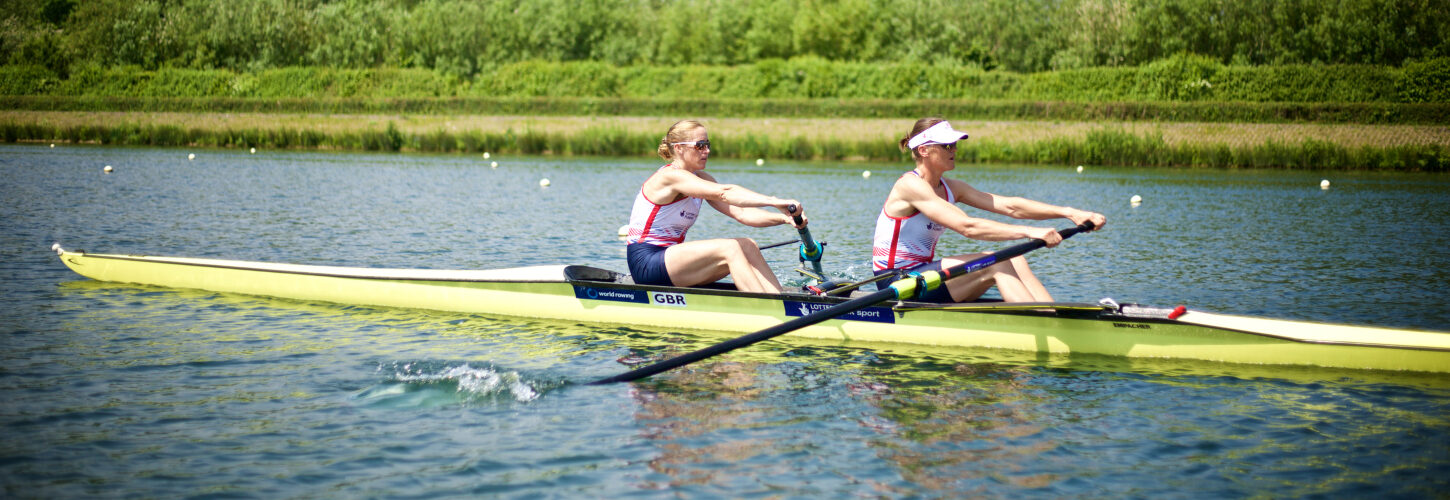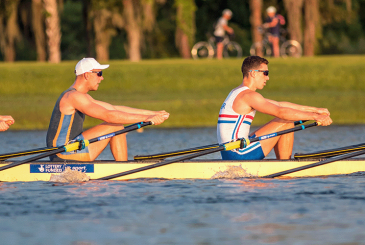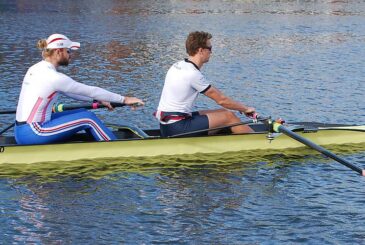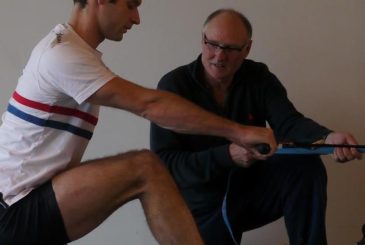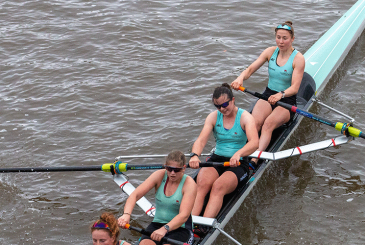Coach consultant Robin Williams explores technique and skill – and how you can improve both
This month I am looking at skill in rowing, the difference between skill and technique, how usefully skills from other sports can transfer to rowing, and finally whether cross training activities can augment water skills.
These themes follow naturally from the recent article about self-help technique which covered attitudes to learning and useful basic concepts about moving a boat which can help accelerate your learning.
If you have the right idea or picture in your head, then you are likely to make better sense of rowing technique than someone who does not. Example concepts include swimming and kayaking where we face forwards and enter the hand or paddle in the direction of travel, compared to rowing where we face backwards and frequently miss the entry!
So, actual experience of these other sports can offer transferable skills when stepping into a rowing boat, for instance.
Sporting backgrounds and slow burners
In Owen Slot’s book, The Talent Lab, he looks at common ingredients amongst serial gold medallists and found many had experience of other sports and activities before settling on their specialism. He calls them ‘slow burners’, the conclusion being that a broad grounding across several disciplines when young might be more useful than early specialisation.
From our recent crop of GB Olympic champions and world medallists, Alex Gregory was a competitive swimmer for over 10 years before his rowing career. Swimming is good for learning the feel of water, for gliding, breathing control, and leverage and for the direction of travel entry skill mentioned above.

Most people would acknowledge Alex as a ‘crew maker’, ie someone whose skills helped set the boat for others, with great feel for the water and technical composure under pressure.
Anna Watkins was another swimmer and Katharine Grainger played netball, hockey and athletics before rowing and even obtained a black belt in karate.
Vicky Thornley was a horse rider and Debbie Flood was proficient at judo while Ellie Piggott did a lot of cross-country running at school, as well as netball, so she had some aerobic base from the former and hand/eye coordination and agility from the latter.
“The point is that we all have some skills lurking in our background, ready to be awakened, even if they aren’t from international level!”
Chris Hoy was a rower before turning to cycling and of course so was Rebecca Romero, who won Olympic silver with the GB women’s quad at Athens in 2004, and Hamish Bond, one half of the famous Kiwi pair, also successfully transferred over from rowing to cycling.
Plenty of experts reckon it takes 10 years to achieve mastery in a sport, but Helen Glover famously achieved a world medal after only two years and Olympic glory in four – yet she had many years of relevant experience and fitness behind her, having played hockey in an England Satellite Squad as well as tennis, netball, swimming and athletics for Cornwall.
She and Heather Stanning were both fast middle-distance runners while Australian sculler, Kim Brennan, was a world junior silver medallist at 400m hurdles.
So, the 10 years can include transferrable skills from other sports, meaning that you don’t necessarily have to begin the clock with your first rowing session.
The point is that we all have some skills lurking in our background, ready to be awakened, even if they aren’t from international level!
Technique versus skill
It is possible to imagine that there’s no real distinction between technique and skill – after all good technique is skilful isn’t it?
As your rowing technique improves it is logical that you are becoming more skilful. Yet they are not quite the same thing.
You could have exemplary technique on a rowing machine which is indoors and stable, or even in a boat when half the crew are sitting it level and the rate is low, but when we introduce whole crew balance and synchronisation, pitch, yaw, twist of the hull, and – above all – reduce the stroke cycle time from 3” to 1.5” up at high rate, it suddenly looks much tougher.
“In my experience, rowers spend a lot of time on the closed skills, just rowing, but not so much on the higher skill areas”
Definitions of skill include performing technique with dexterity, and the ability to rapidly micro-adjust technique.
Technique is the theory and skill is what brings it to life. So, by the time we come to race at regattas we need a high level of instinctive and reactive skill. An essential ingredient of skill is body-awareness, and a key element of awareness is centring (in the physical sense – there is also a mental version), so knowing where your centre of balance is.
Open, closed and centred
Understanding your centre of mass is obviously fundamental to gymnasts, acrobats, or somersaulting divers, but also to rowers. Although these three examples perform very skilful and complicated routines they are, nevertheless, ‘closed skill’ sports. That is, they are in control of their environment and, within reason, can perform their routine when they are ready.

In rowing we have control of our own racing lane and a repeating stroke cycle which is predictable, but we also have variables such as current, wind, balance, oars and moving parts, including other people, to blend with our own movement patterns. So, we need both ‘closed’ and ‘open’ skills.
Much of our training involves practising at low rate, steady rowing in the same seat and with the same crew.
“Feeling your centre of gravity or centring is a very useful skill and we can definitely practise it and get better at it”
In my experience, rowers spend a lot of time on the closed skills, just rowing, but not so much on the higher skill areas.
Breaking down the stroke and developing mastery over the trickier elements is needed too: keeping the boat set in rougher water, recovering from a blade error, losing control of the catch/finish at higher rates, knowing how to correct a feeling of heaviness, being able to row technically in any boat class, with anyone else, feeling the hull speed in strong head or tail conditions – are all examples.
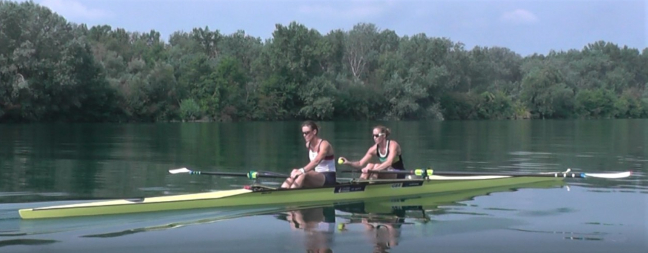
Our mass accounts for approximately 80%, the boat around 18% and oars 2%, so if we have poor control of our mass up at race rate it can seriously cost us speed. Feeling your centre of gravity or centring is a very useful skill and we can definitely practise it and get better at it.
Da Vinci’s navel
Around 1490 Leonardo da Vinci drew Vitruvian Man as his vision of the perfect human proportions, with a circle drawn around the extremities and the navel as the centre.

Today, in a rowing boat the navel and pelvis area is still very important! In terms of power transmission, we need to be strong there (core). In terms of balance our inner-ear/brain connection is where the information is processed, but our navel is the gyroscope, the physical point of orientation.

As we can see in the diagram the navel is the centre of our three planes of movement, sagittal, transverse, and coronal, and now we can easily appreciate why trunk position matters. Our recovery and drive sequences involve movements in all these planes. Some beginners are taught to stand up in their sculls, let go of handles, do rigger dips and other balance drills to help them work out balance.
Hand skills
If the navel is our natural gyroscope, connecting our limbs and extremities to the centre, then good hand skills is another key area because, of course, we are holding and controlling the oar with them.
In-boat hand drills include:
- Rowing square blades
- One-side square blades, other feathered
- Late/early square
- Open fingers recovery
- Double or triple squaring in the recovery
- Slide pauses with handle height dips
- Static catch and finish dips
- One-handed rowing
- One-handed rowing and touching your nose with the other
- ‘Cutting the cake’ drills (double finishes), and many more.
Training our skills
Going back to our navels, the start point is on the land by making our kinetic chain strong enough to cope. The GB and EIS (English Institute of Sport) S&C staff are great at cooking up ways to do this, but even simple exercises like the plank (front, left side, right side) will help.

Once we have the basic strength in the muscle chain, we need to make it functional and dynamic for rowing.
“Can you keep time with others with your eyes shut? If you all feel the boat well, it is easy to stay in time”
Circuit training is a simple example with lifting, lunging, turning, loading, climbing, and coaches can easily introduce ‘gyroscope’ elements by using light free weights, wobble board exercises, and work with medicine balls in pairs.
One-legged squats, lateral arm raises and other drills on land, or in the boat, will challenge our ability to centre well.
Eyes-shut rowing is a classic because we remove sight as an important sensory aid and then have to feel everything. With eyes shut, think about how heavy or light the stretcher feels and whether you are letting the boat come to you in the recovery or vice versa. Can you keep time with others with your eyes shut? If you all feel the boat well, it is easy to stay in time.
A favourite drill is a full length ‘air stroke’, meaning you take a stroke without the blade in the water at all. It tests whether you can arrive on balance at the stretcher without the chest dipping forwards.
Roll-ups from backstops to entry are useful and can progress to speed roll-ups to increase difficulty.
All of these drills can be incorporated into regular training and you can put the whole thing to the test by doing practice starts and high-rate bursts. When rowing at quarter slide, you can easily do over-speed training and achieve stroke rates over 70spm to improve agility and fluid movements.
You can see more of Robin’s coaching content and videos on his Facebook page at Williams Coaching. And look out for his next article on British Rowing Plus!
Take it further with our Rower Development Guide and additional resources
For more information about developing athletes and skills, check out the Rower Development Guide here – or play the webinar below.
We also have an exercise library here, plus, there are more resources available from RowHow, including three conditioning posters which you can download for free.
Photos: Naomi Baker, Pexels, Shutterstock and Robin Williams


